
cd_nom

| Author : S. Wroza |
 |
Despite the Creative Commons license, please inform the author of the use which will be made of his photo
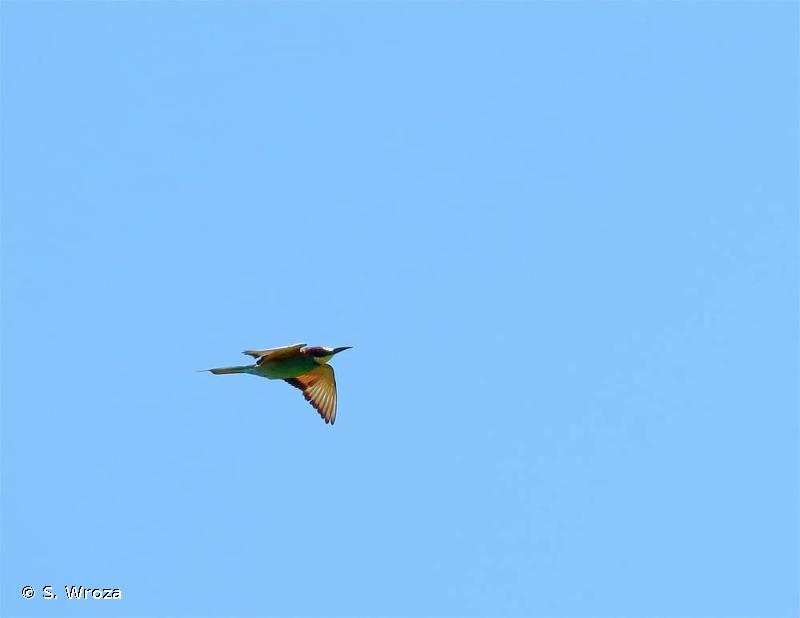
| Author : S. Wroza |
 |
Despite the Creative Commons license, please inform the author of the use which will be made of his photo
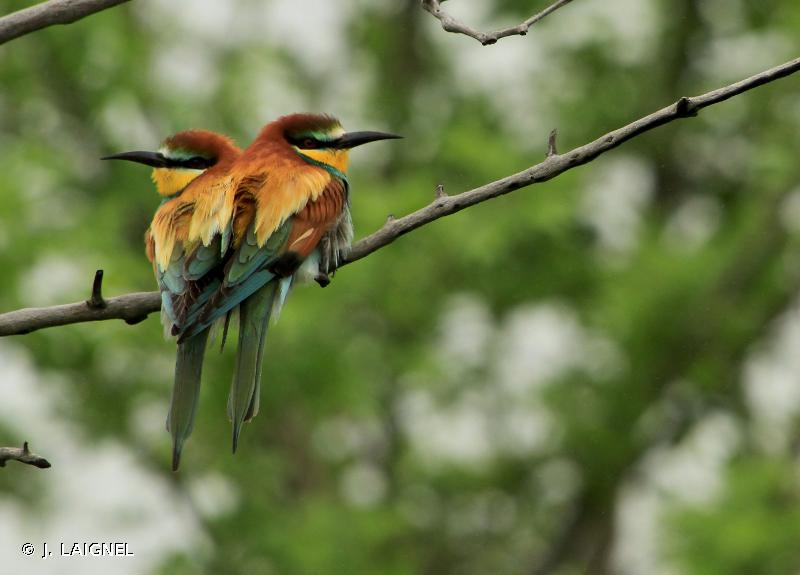
| Author : J. LAIGNEL |
 |
To get the picture, please visit:
Julien Laignel
Chargé de mission SNB - SPN/MNHN
4, avenue du Petit Château
91800 BRUNOY
Tel.: 06.10.68.23.36
Mail: julien.laignel@9online.fr
Despite the Creative Commons license, please inform the author of the use which will be made of his photo
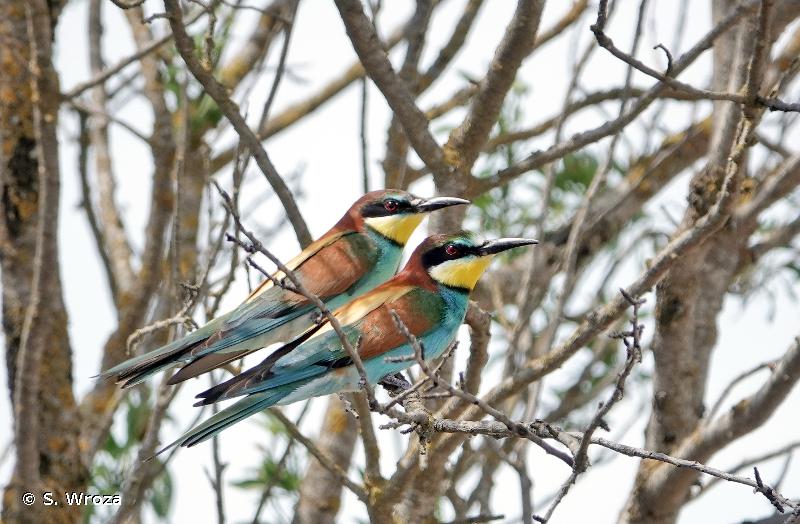
| Author : S. Wroza |
 |
Despite the Creative Commons license, please inform the author of the use which will be made of his photo
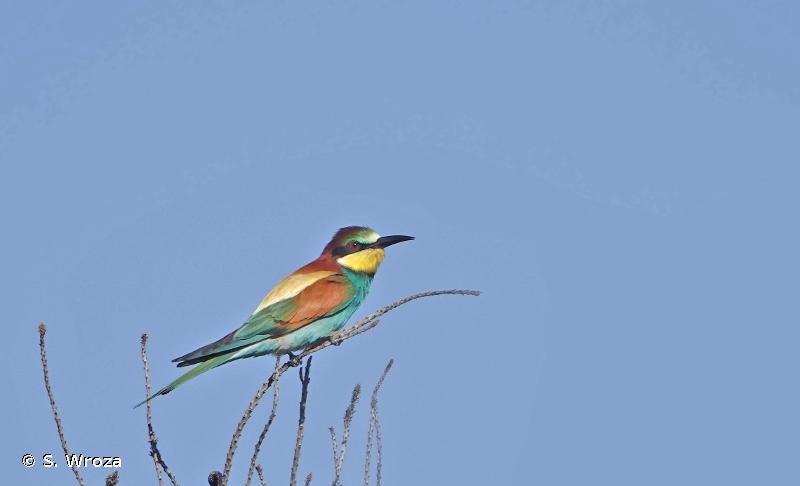
| Author : S. Wroza |
 |
Despite the Creative Commons license, please inform the author of the use which will be made of his photo
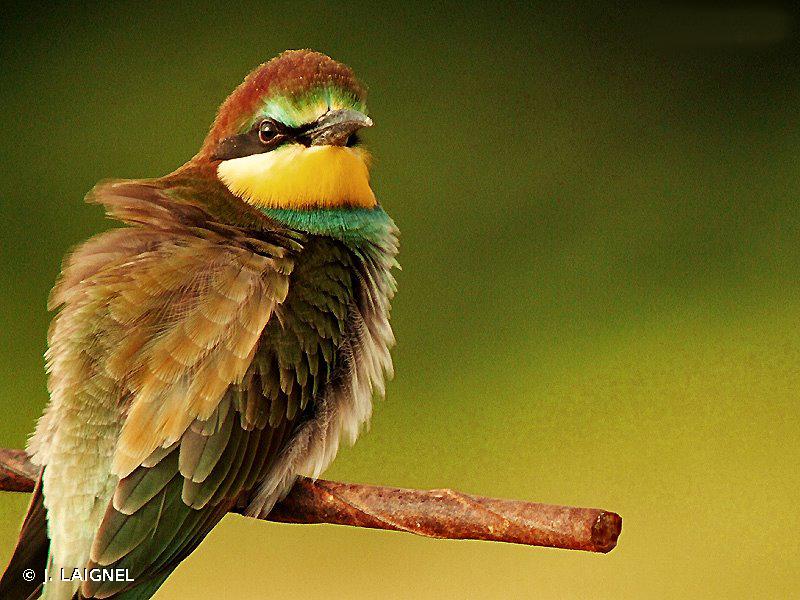
| Author : J. LAIGNEL |
 |
To get the picture, please visit:
Julien Laignel
Chargé de mission SNB - SPN/MNHN
4, avenue du Petit Château
91800 BRUNOY
Tel.: 06.10.68.23.36
Mail: julien.laignel@9online.fr
Despite the Creative Commons license, please inform the author of the use which will be made of his photo
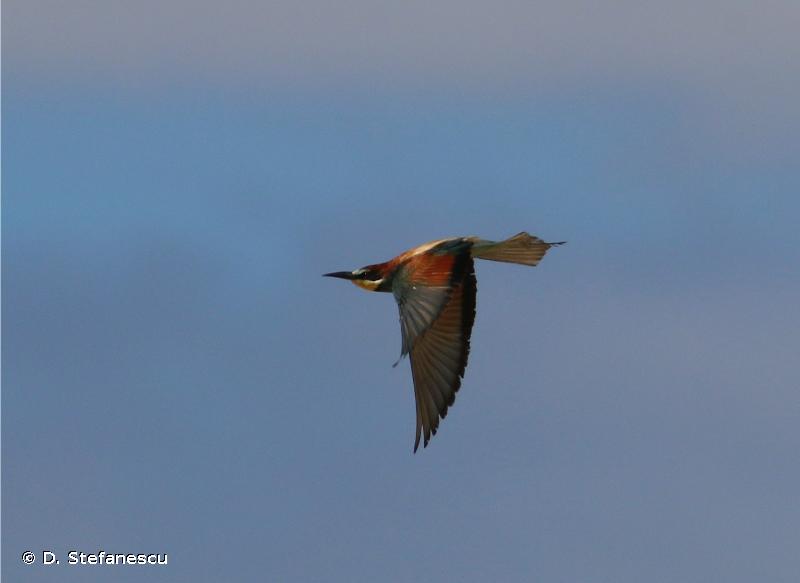
| Author : D. Stefanescu |
 |
To get the picture, please visit:
Dan Stefanescu
email : inpn@mnhn.fr
Any reuse of one or more photographs on this site is subject to an authorization request from the author.
Link to the Code of Intellectual Property (Legifrance)

| Author : J.P. Siblet |
 |
To get the picture, please visit:
Jean-Philippe SIBLET
Muséum national d'Histoire naturelle - Service du Patrimoine Naturel
36 rue Geoffroy Saint-Hilaire
CP 41
75 231 PARIS CEDEX 05
e-mail : inpn@mnhn.fr
Despite the Creative Commons license, please inform the author of the use which will be made of his photo
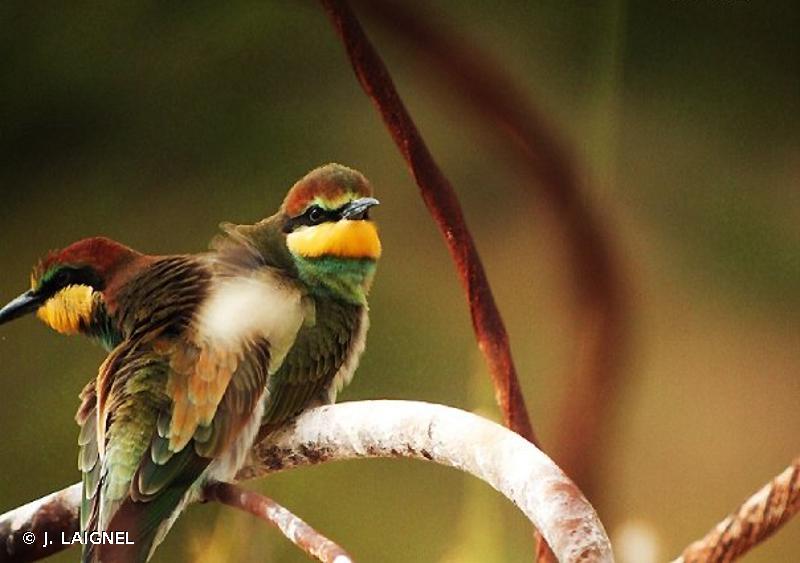
| Author : J. LAIGNEL |
 |
To get the picture, please visit:
Julien Laignel
Chargé de mission SNB - SPN/MNHN
4, avenue du Petit Château
91800 BRUNOY
Tel.: 06.10.68.23.36
Mail: julien.laignel@9online.fr
Despite the Creative Commons license, please inform the author of the use which will be made of his photo
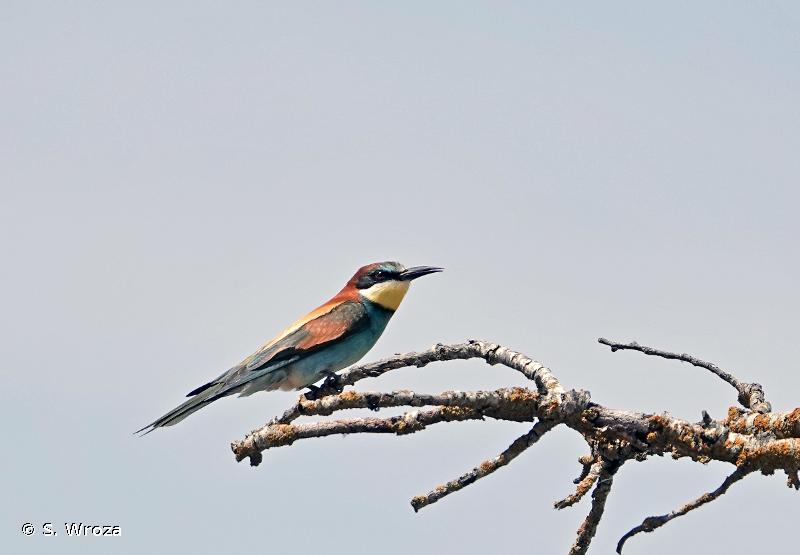
| Author : S. Wroza |
 |
Despite the Creative Commons license, please inform the author of the use which will be made of his photo
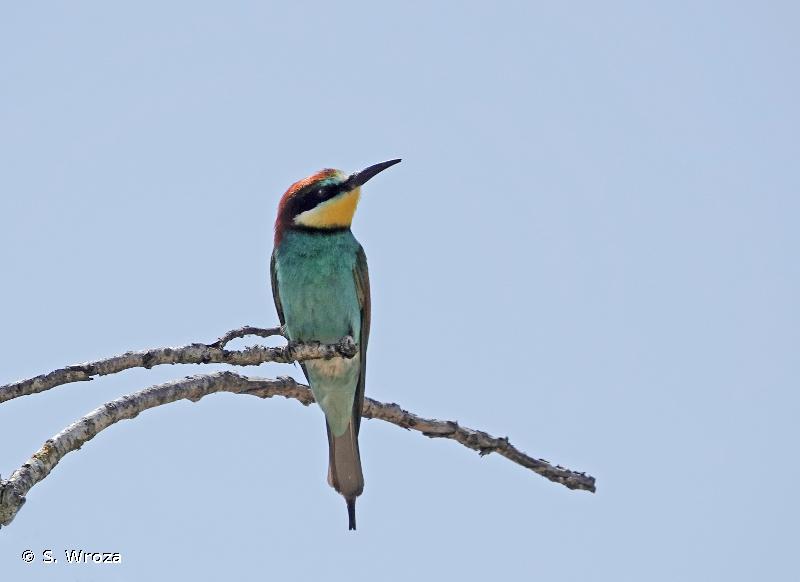
| Author : S. Wroza |
 |
Despite the Creative Commons license, please inform the author of the use which will be made of his photo
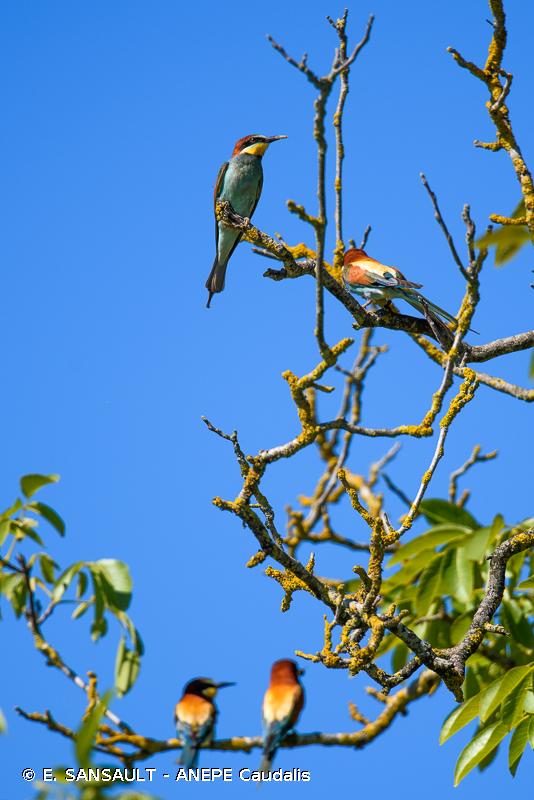
| Author : E. SANSAULT - ANEPE Caudalis |
 |
To get the picture, please visit:
Eric Sansault
ANEPE Caudalis
email : inpn@mnhn.fr
Despite the Creative Commons license, please inform the author of the use which will be made of his photo
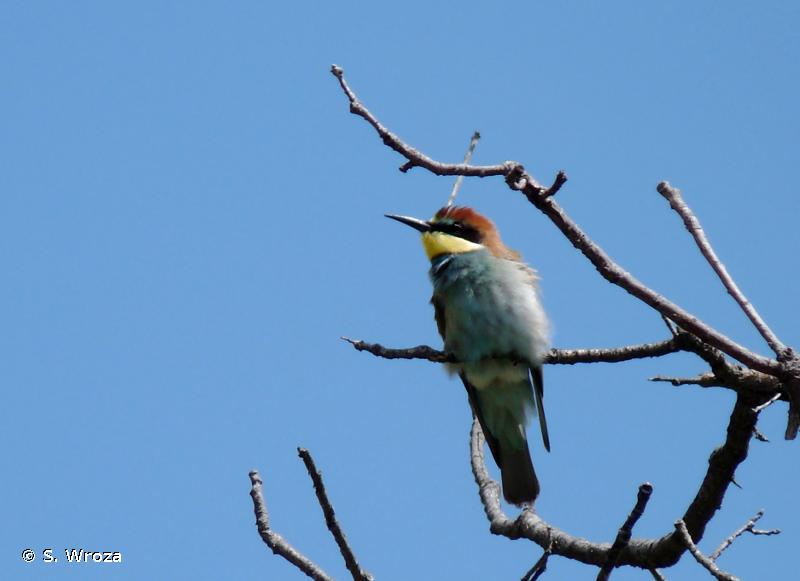
| Author : S. Wroza |
 |
Despite the Creative Commons license, please inform the author of the use which will be made of his photo
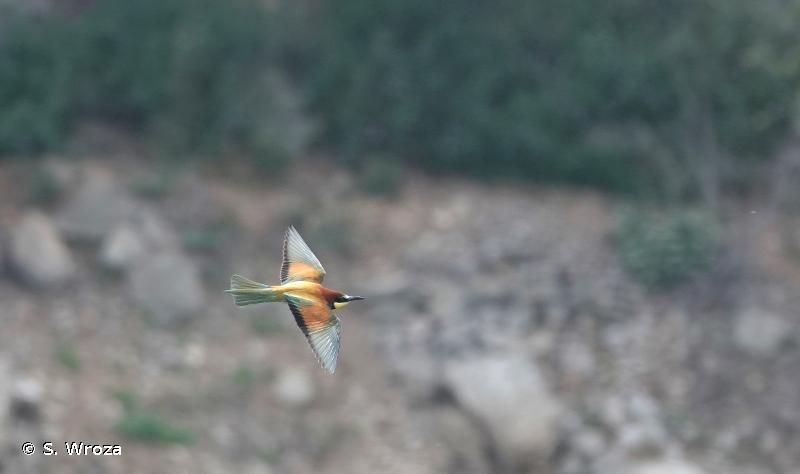
| Author : S. Wroza |
 |
Despite the Creative Commons license, please inform the author of the use which will be made of his photo

| Author : S. Wroza |
 |
Despite the Creative Commons license, please inform the author of the use which will be made of his photo

| Author : H. Bouyon (ACOREP-France) / INPN |
 |
To get the picture, please visit:
Any reuse of one or more photographs on this site is subject to an authorization request from the author.
Link to the Code of Intellectual Property (Legifrance)
Longueur 27-29 cm, envergure 44-49 cm, poids 44-78 g.
L’espèce s’établit dans des terriers qu’elle creuse le plus souvent dans des talus proches de l’eau. Elle apprécie les berges des rivières, les vallées abritées et les terrains ouverts avec des arbres dispersés, mais toujours dans des conditions chaudes et ensoleillées.
Elle requiert de grandes quantités d’insectes volants. Les Hyménoptères sont habituellement préférés, notamment abeilles et guêpes contre lesquelles elle semble partiellement immunisée. Le Guêpier est souvent grégaire quand il se nourrit. Dans les régions où il est commun, il n’est pas rare d’observer quelques dizaines d’oiseaux se nourrissant ensemble. Il chasse depuis un perchoir, effectuant des vols plus ou moins longs pour capturer et rapporter sa proie. L’abdomen des abeilles est frotté avec dextérité pour décharger le venin. Les aiguillons peuvent être retrouvés plantés sur le perchoir, mais certains sont avalés, sans doute après une détérioration préalable.
L’espèce est monogame, rarement bigame. Les individus non nicheurs s’associent parfois aux nicheurs pour les aider. Les mâles sont presque toujours surnuméraires dans les colonies. Le couple défend un ou plusieurs perchoirs proches du nid. Les deux partenaires partagent les tâches liées à la nidification et passent de longs moments perchés l’un à côté de l’autre, notamment en début de saison. Le nourrissage de la femelle par le mâle dé�ute normalement après plusieurs jours d’excavation du nid. Il diminue pendant l’incubation, la femelle étant nourrie à l’entrée du trou ou à l’extérieur.
Le nid est un tunnel finissant par une chambre d’incubation située dans l’axe ou sur le côté. Dans les talus, le tunnel est horizontal ou légèrement surélevé. Lorsqu’il est creusé au sol, un trou vertical d’une dizaine de centimètres de profondeur précède le tunnel horizontal. L’unique ponte de 6 ou 7 œufs (extrêmes 4 et 9) est déposée en mai. L’incubation dure 20 jours et l’envol a lieu vers l’âge de 1 mois.
Spanneut, L.(Ecosphère, Service du Patrimoine Naturel.),2008
Continental
Metropolitan France
Overseas
Marine
Metropolitan France
Overseas
The map presents a summary at the 10 x 10 km grid of the observation data for the species transmitted to the SINP. These data have been subjected to validation filters.
The map presents a reference distribution layer of the species at the scale of departments and marine sectors. The presence and absence data were established by expertise within a network of partners. This reference distribution is used in the validation process of the SINP data at the INPN level.
Corresponds to a report on the basis of at least one observation proved within a period of 10 years (20 years for little-known invertebrates) preceding the year and no presumption of extinction since obtaining the last data nor doubt on reproductive and implemented nature of this population. For migratory species, the presence indicated concerns areas of reproduction.
This status is based on one or more of the following criteria:
This point covers the absence, more difficult by nature to demonstrate than presence. This status is based on one or more of the following criteria:
This status must be assigned to a department in which the presence of the species is casual.
Particular case of absence due to a proven extinction less than a half century ago (older disappearances are treated as "no probable or definite").
In the state of knowledge, we can not comment on the presence or absence in the current department. This is the default status when not comprised in one of the previous categories or whenever there is doubt.
The map shows the global distribution of the species based on GBIF data (Global Biodiversity Information Facility).
